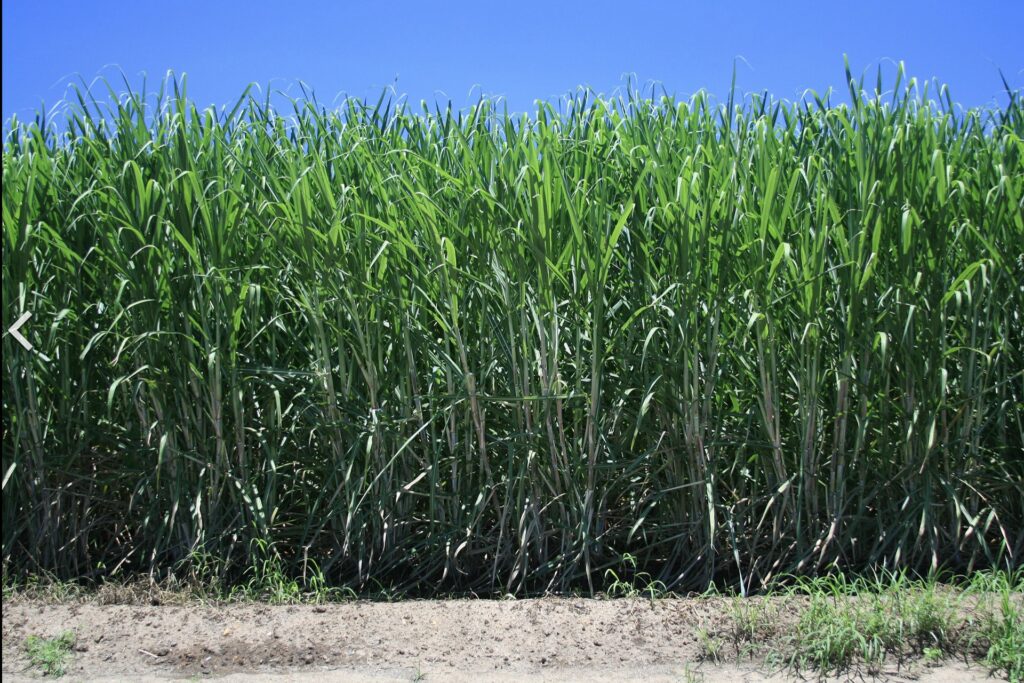Driving around tropical North Queensland, we have seen and walked in remarkable rainforest-clad mountains and viewed beautiful coastal scenery. However, one of the more enduring memories was the actual extent of banana, sugar cane and pineapple farms.
I was exposed to banana and sugar cane farming in my youth. When I lived in Maryborough (Queensland) in the early 1980s, sugar cane was a dominant enterprise. The town had its sugar mill, and it was one of the major employers. Fathers of many school friends worked at the mill. At 5 pm the weekday pilgrimage of mill (plus Walker Engineering) workers riding their bikes home along Kent Street is a significant historical moment.[1] During the crushing season, endless truck and trainloads came through the city. I still recall the lingering sweet stale smell of sugar in the streets during that long period.
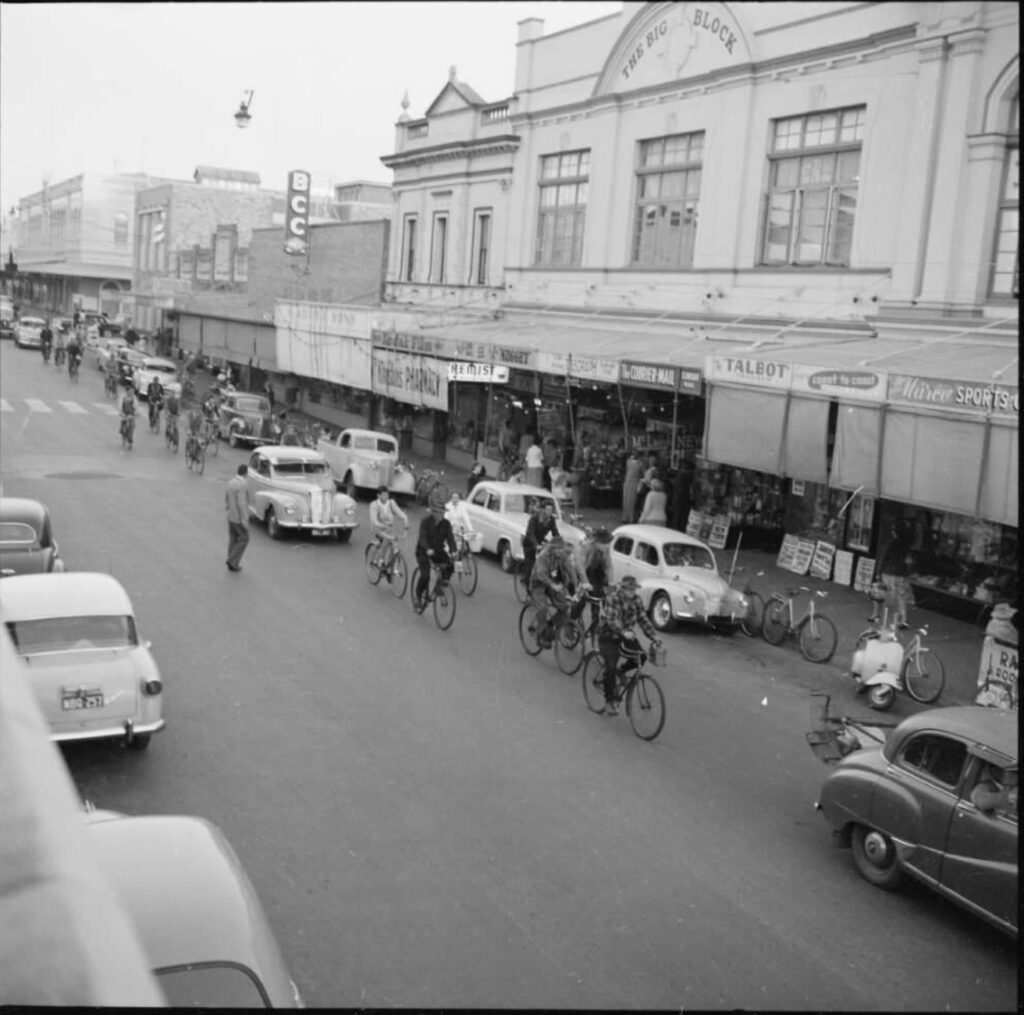
A decade later, I lived on the north coast of NSW at Coffs Harbour, famous for the Big Banana. Banana plantations dominated the skyline on steep slopes on the northern side of the city. I recall buying bananas at the Bonville roadside stall for 17 cents a kilo.
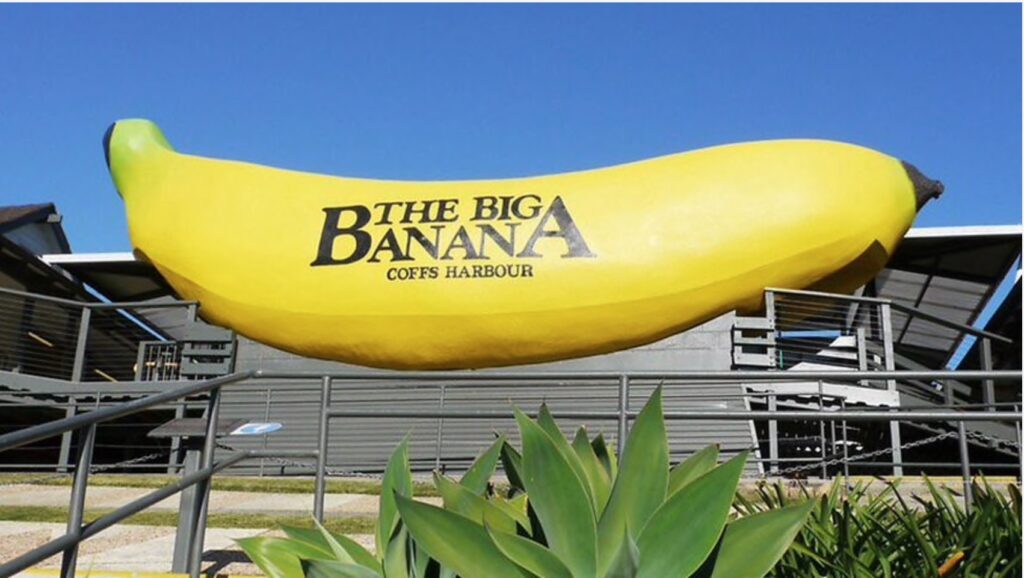
I thought Maryborough was the epicentre of cane growing and Coffs Harbour for bananas through my rose-coloured glasses. As I expanded my wings, I subsequently learned that cane growing is on a much bigger scale in North Queensland. On our recent visit to North Queensland, only now do I realise that the once-mighty Coffs Harbour banana industry is tiny compared to this region. In the 1990s it was still one of the major growing areas until tropical Queensland plantations increased substantially. The sub-tropical region in NSW now represents less than four percent of the national production.
We first glimpsed massive banana plantations driving through Lakeland on our way to Cooktown. While travelling through the Tully River valley, on our way to the gorge, we saw how big the industry is up here. The valley is surrounded by densely vegetated mountains that attract moisture and dump four metres of rain a year in the region. The primary beneficiary of this abundance is bananas. Most of the valley floor is covered in extensive plantations. As a former manager of extensive eucalypt and pine plantations covering thousands of hectares, I could relate to this sort of enterprise.
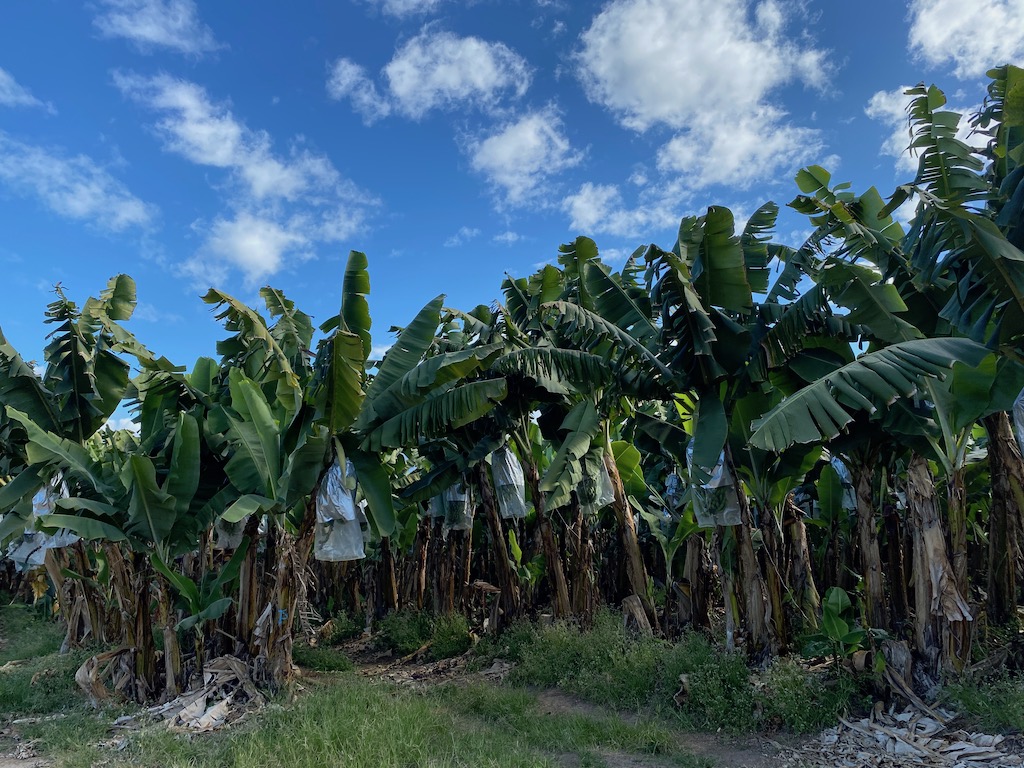
Bananas require full sunlight for most of the day, and apparently, they grow best in a sheltered area where the roots do not become flooded. I am not sure how this translates to the banana plants growing in the wettest region of Australia. Still, the Tully River valley is the largest banana-growing region in Australia. Queensland, and more specifically northern Queensland, produces 96 percent of Australia’s bananas. There was a rapid expansion in the decade after 1977 doubling in size, at the expense of southern Queensland and northern NSW. The main reasons were the favourable tropical climate and the high degree of mechanisation possible on flatter ground, making the north Queensland producers more efficient and productive. Still, the distance from the major city markets was a challenge. Farmers overcame this by increasing plant density, gaining greater control of leaf diseases, and the efficient use of fertilisers. The northern producers were better able to compete with southern producers outside of the traditional winter-spring period when production is seasonally low in the south. Another factor is the winter plantings of banana trees. This meant the production of fruit is during winter-spring when banana prices are highest.
Like me, you probably wondered why the bunches are covered with a polythene bag like a sleeve. It is done when the fingers begin to curl upwards. The reason is to increase yield by up to 10 to 15 percent due to an increase in finger length and a quicker filling rate. The covers are predominantly clear/silver plus some blue/silver. The reflective silver also acts as a screen against sunburn. We did see one plantation covered in a variety of rainbow colours near Innisfail – we wondered if they were making a contemporary statement.
Cavendish, my favourite banana, accounts for 90 percent of the bananas produced. I was surprised to find out that bananas are Australia’s number one supermarket product and growers favour the cavendish because it can be transported over long distances.
In 2019, two major biosecurity threats challenged the banana industry. The most notable was Panama disease in north Queensland. We saw signs highlighting biosecurity requirements on the farms. There were also quarantine points before entry onto the plantations by the workers and other visitors.
Sugar cane arrived with the First Fleet in 1788. It didn’t grow successfully, and it wasn’t until 1861, when settlers moved into Queensland, that sugar plantations were promoted to develop an income-producing trade for the State. The farms were developed primarily with the assistance of indentured labourers from the South Pacific islands. Federal legislation stopped this practice in 1901 and Europeans, mainly Italians, came to the cane fields searching for a better life. It was hard work in the cane fields manually cutting the cane for harvest. The sugar mills crushed around 30 million tonnes annually, producing 3.5 tonnes of raw sugar.
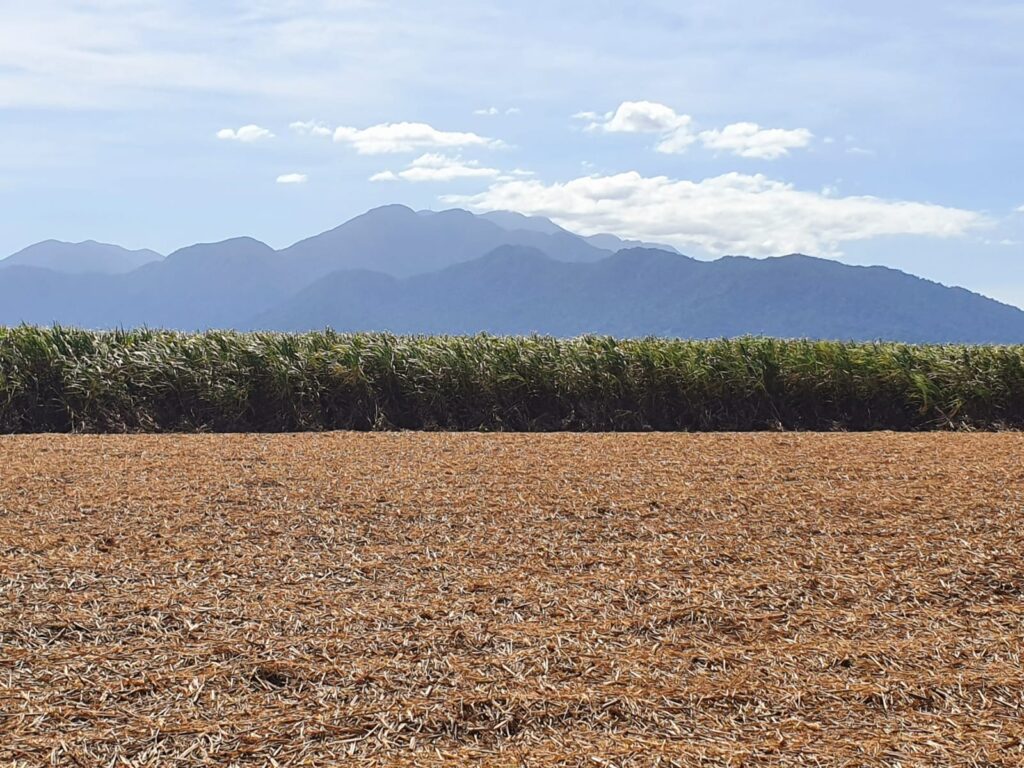
Queensland produces 95 percent of the sugar produced in Australia. Most of it is exported, and Australia is the second-largest raw sugar exporter. Australia makes crystal sugar such as white, raw, icing, caster and brown sugars. Liquid sugar is taken from the refining process before crystallisation and is the source of sugar for producing beverage and food products. Treacle and golden syrup are also produced. The former is made from syrups that remain after white sugar is removed from the refining process. The latter is similar but goes through an additional decolourisation process.
We visited Lucinda with its record-breaking six-kilometre jetty to service the two large sugar mills in the region. The Victoria Mill at Lucinda is the largest in Australia. In the Hinchinbrook region, on average 4.5 million tonnes of sugar cane is harvested producing almost 600,000 tonnes of sugar annually. There are 60 harvesters, 27 sugar train engines hauling 4,200 cane bins along 558 kilometres of the rail network. Just when we thought we had seen the largest sugar cane area, travelling further south, we arrived at the ‘capital’ of sugar production near Mackay which was even larger than the Hinchinbrook region. I was amazed at the extent of sugar cane farms stretching deep into the Pioneer Valley on our drive to Eungella National Park.
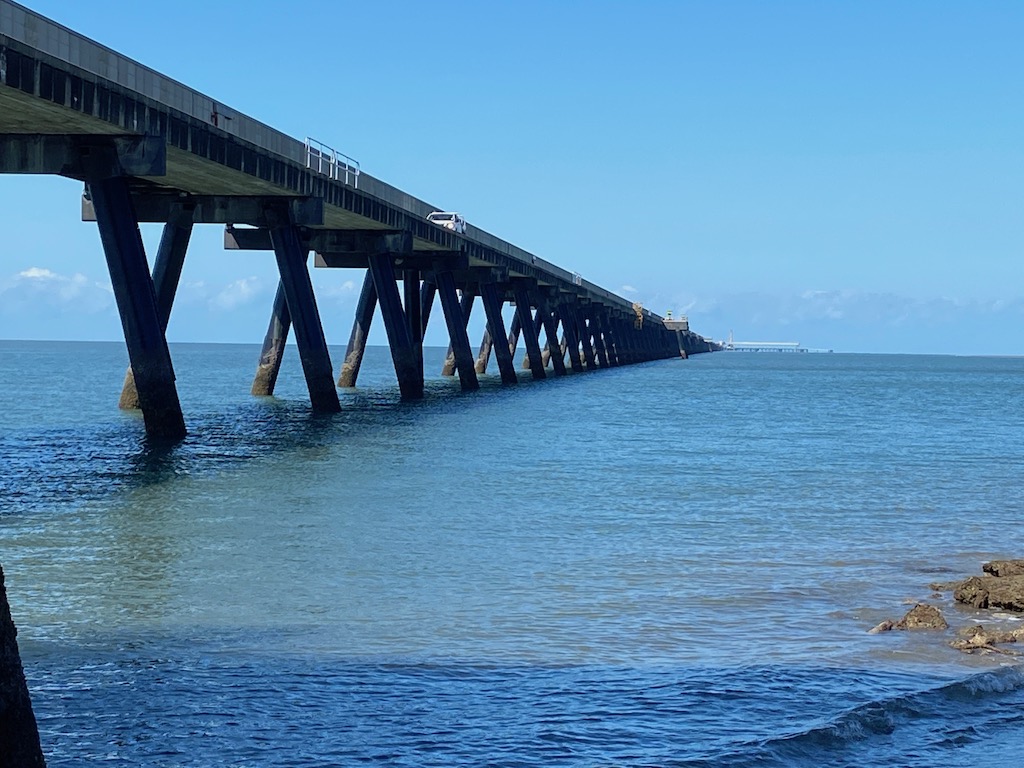
Sugar mills operate under a continuous crushing system to ensure efficient harvesting, transport and milling capital. Sugar cane is harvested into billets and transported by either rail or road to the mills. They are then sent to a shredder to be shred into a fibrous material. The sugar juice called bagasse is extracted by feeding material through rollers. It is then passed through heaters and lime is added to neutralise acids to aid in removing impurities while in clarifiers. The clear juice from the clarifiers is concentrated into a syrup by boiling it under vacuum in a series of connected vessels called evaporators. The syrup is then boiled where it is seeded with small sugar crystals. The crystals are grown to the required size and then separated from the syrup in centrifugals. This process is repeated until the amount of sugar obtained is too small to make further extraction economical. The syrup leftover from the final separation is called the final molasses. Molasses is used in distilleries and stock feed. The raw sugar is then dried and stored. Australia’s biggest market is Indonesia, which is the largest importer of raw sugar in the world. Indonesia has a long history of producing sugar but increasingly depends on raw sugar to meet its fast-growing population’s demands.
I am amazed that the sugar industry is still so large. The price of sugar has fallen on average two percent each year since the 1970s to under $500 a tonne. It has struggled to achieve a two percent increase in yield over that time, mainly driven by increases in more areas of sugar cane plantations. The industry has also been hindered by disease of the better performing varieties. The world price is always volatile spurred on by years of production and export subsidies in competitor countries such as India. The collapse of the oil price saw Brazil decrease its ethanol production from cane favouring increased sugar production. They have also faced an increased regulatory burden from a government fixated on the perception that sedimentation in the inner Great Barrier Reef is specifically from farms and bad for the outer reef.
As we drove further south past the Burdekin River, we saw farmers irrigating the cane fields. And because of this, the cane can still be burnt before harvest. Elsewhere, the modern minimum tillage method is employed, but in the irrigated fields near the Burdekin, the mulch disrupts the irrigation. Burning is still allowed to occur, a relic from a bygone era. Italian and Spanish immigrants, displaced by World War II, arrived on the cane fields to cut the cane. The daily routine was back breaking. It involved laying the portable rail, loading the previous day’s rake of cut cane, cutting the next rake, and finally burning for the next day’s cut.
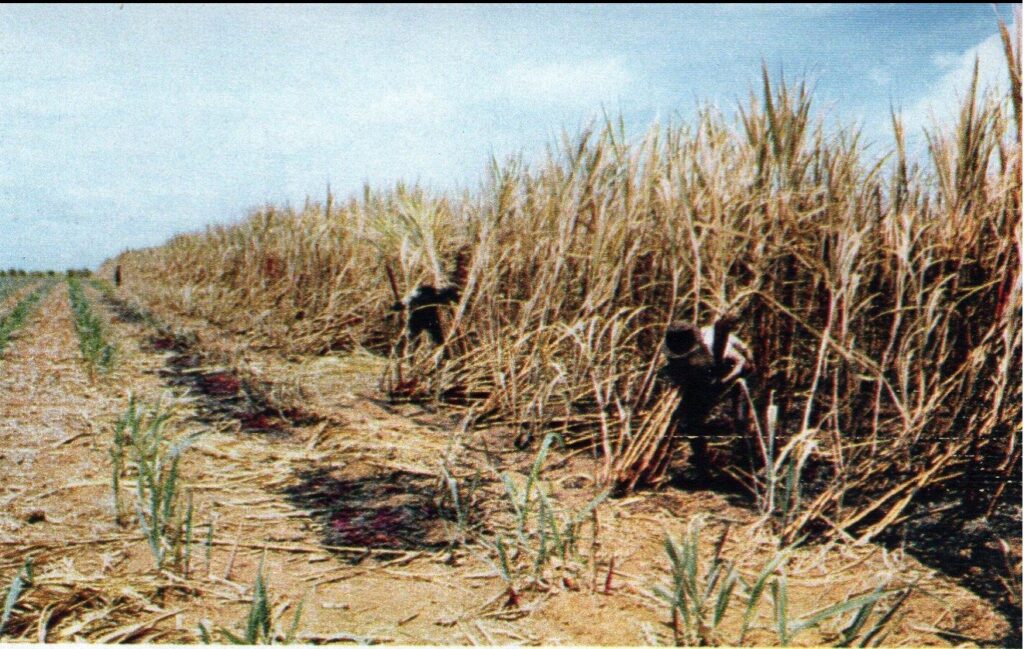
Pineapple is another food crop grown in significant numbers in north Queensland. Most of Australia’s 35 million pineapples grown annually come from Queensland. We saw massive pineapple plantations just north of Townsville. Most of the pineapple produced still goes to the Golden Circle cannery, but increasingly more fresh pineapple is being sold to the market.
[1] Maryborough was once known for being a bike-friendly town. Almost everybody used to cycle to and from work or to and from school. There is an iconic photo of Walkers Ltd employees leaving work on their bikes which I couldn’t find online. It is used as an etching on the Town Hall green.
